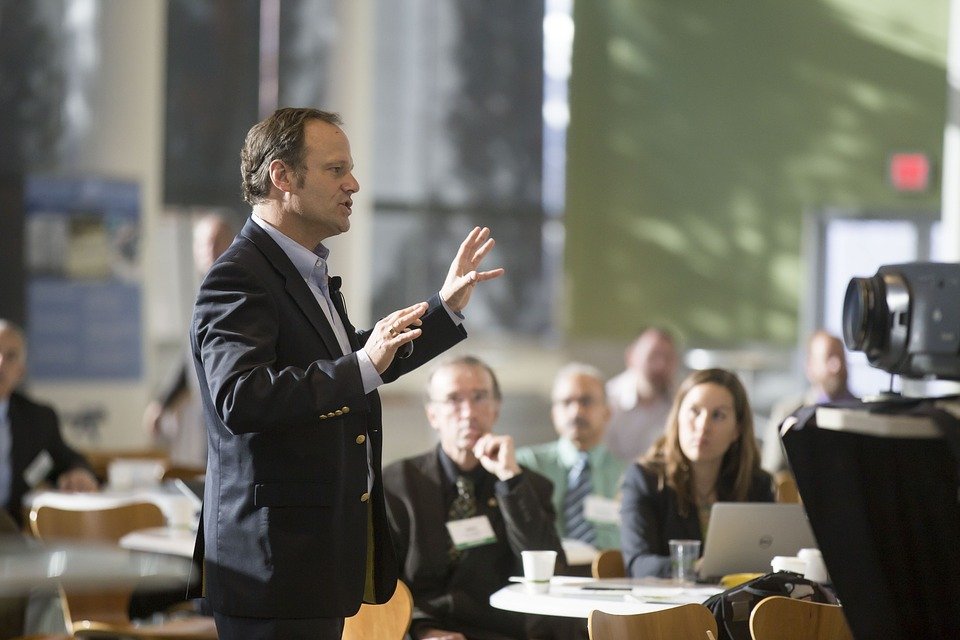Body Language and Presentation Tips for Beginners
Last updated on November 19th, 2024
Body language plays a vital role in the success of any presentation or public speaking engagement. Non-verbal cues such as posture, gestures, eye contact, and facial expressions can significantly influence how your audience perceives your message. While carefully crafted slides and well-researched content are essential, understanding and using effective body language can elevate your delivery, making your presentation memorable and engaging.

Understanding Body Language in Presentations
Body language refers to the non-verbal signals we use to communicate. These signals include everything from our facial expressions and eye movements to how we stand and use our hands. In presentations, body language can:
- Reinforce your spoken words.
- Replace speech for emphasis (e.g., a nod for agreement).
- Convey confidence and authority, or conversely, nervousness and uncertainty.
A common misconception is to “just act naturally.” However, presenting to an audience requires a level of expressiveness and control that goes beyond day-to-day interactions.
Key Body Language Techniques for Presenters
Developing and refining your body language can transform your public speaking skills. Here are some crucial techniques:
Posture and Stance
- Stand Tall and Open: Keep your feet shoulder-width apart with your weight evenly distributed. This stance projects confidence and stability.
- Avoid Defensive Postures: Crossing your arms or slouching can signal insecurity or detachment.
- Keep Upper-Body Movement Purposeful: Maintain stillness in the lower half of your body and use the upper half for gestures that emphasize your points.
Hand Gestures
- Emphasize Key Points: Purposeful hand movements can highlight important parts of your speech. For example, using open-palmed gestures signals transparency and trust.
- Avoid Excessive Movement: While animated gestures can add energy, constant movement can be distracting. Aim for big, controlled movements that you hold for a few seconds.
- Hand Placement: When not using gestures, keep your hands naturally at your sides or in front of you, with relaxed elbows. Avoid hiding your hands behind your back or gripping a podium tightly.
Eye Contact
- Connect with Your Audience: Making eye contact conveys confidence and helps build trust. Instead of scanning the room, focus on making meaningful connections by holding eye contact with different individuals for a few sentences at a time.
- Avoid Common Mistakes: Looking at your notes, staring at the ceiling, or avoiding eye contact can make you appear disconnected or unsure.
- Practice Makes Perfect: If making eye contact feels intimidating, start by looking at foreheads or noses to simulate eye contact. Over time, this will help you become more comfortable engaging directly.
Facial Expressions
- Show Genuine Emotions: Your facial expressions should match the tone of your speech. Enthusiasm, concern, or surprise can be effectively communicated through expressions that align with your words.
- Avoid a Blank Expression: A neutral face can make you appear unenthusiastic or robotic. Even subtle changes like a smile or a raised eyebrow can add warmth and connection.
- Self-Check: Use a mirror or video recording to observe and refine your facial expressions during practice sessions.
Body Movement
- Use Movement to Add Emphasis: Stepping forward can emphasize a key point, while stepping back can signal a transition. Plan your movements to complement your content.
- Balance is Key: Too much movement, such as pacing, can make you appear nervous. Instead, move with purpose, shifting positions when transitioning between major points.
- Plan Your Stage Presence: Map out key points where you will move during your talk. Think of it as moving from viewpoint to viewpoint rather than random wandering.
Beyond Basics: Enhancing Your Presence
Using Props Wisely
- Enhance, Don’t Distract: Props can be a powerful way to illustrate a point, but use them sparingly. Overuse can divert attention from your message.
- Simple Tips: Ensure props are easy to handle and directly relevant to your content. Practice with them to maintain a seamless flow.
Mastering Stage Presence
- Practice Self-Awareness: Your stage presence encompasses how you occupy space and project confidence. Rehearse in front of a mirror or record your practice to identify and improve distracting habits.
- Use Pauses: Deliberate pauses can lend weight to your message and give your audience a moment to absorb key points.
Practical Exercises to Improve Body Language
Improving body language is a gradual process that requires dedication:
- Record Your Practice Sessions: Watch yourself on video to identify strengths and areas for improvement.
- Practice with Friends or Colleagues: Get feedback on your body language to become aware of any unconscious movements or habits.
- Join Public Speaking Groups: Participating in groups like Toastmasters can provide real-time feedback and practice opportunities.
Common Pitfalls and How to Avoid Them
- Over-Gesturing: Too many hand movements can distract your audience. Keep gestures intentional and controlled.
- Fidgeting: Movements like tapping your fingers, shifting weight, or playing with a pen signal nervousness. Stay mindful and keep your movements deliberate.
- Creating Barriers: Folding arms or leaning too heavily on a podium creates a physical and psychological barrier between you and your audience.
The Link Between Confidence and Body Language
Confidence is both a cause and effect of effective body language. The more confident you feel, the better your body language will be, and vice versa. A solid understanding of your material is crucial for building this confidence. The better prepared you are, the more naturally your body language will support your speech.
Conclusion
Mastering body language is a powerful tool for any presenter or public speaker. By focusing on posture, gestures, eye contact, facial expressions, and deliberate movement, you can enhance your delivery and better engage your audience. Remember that practice and feedback are key to becoming more aware of your non-verbal communication and improving your overall presentation skills.
